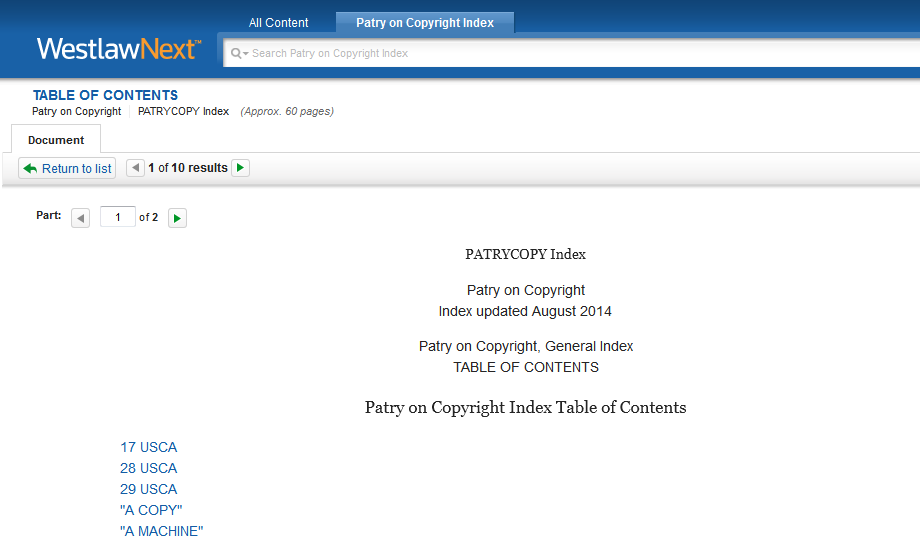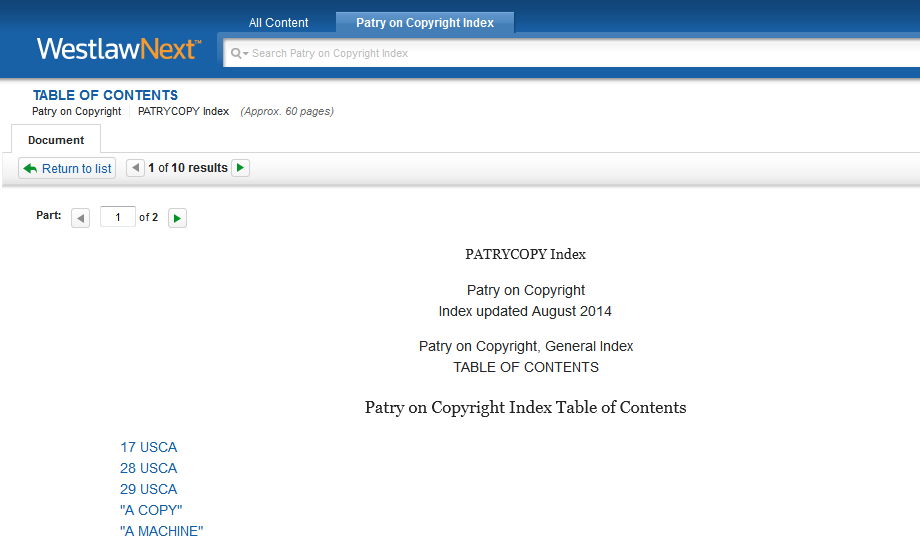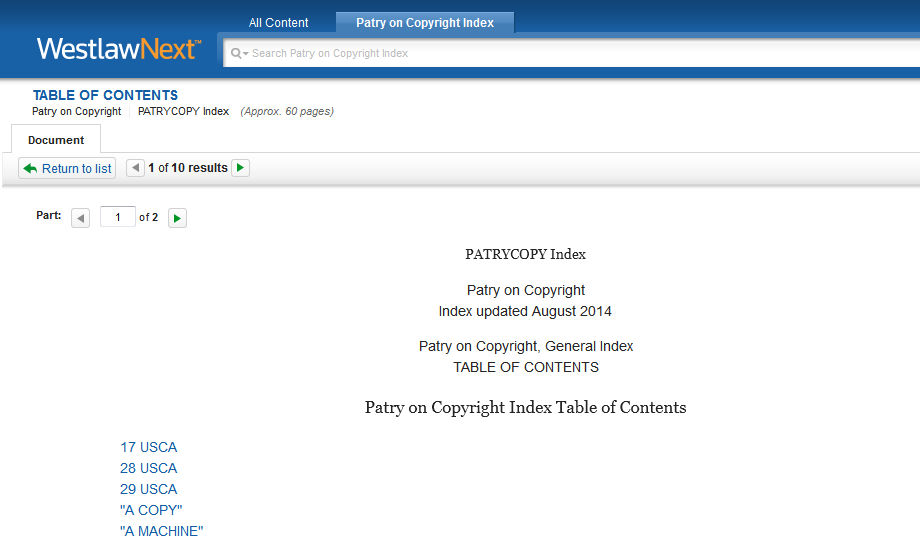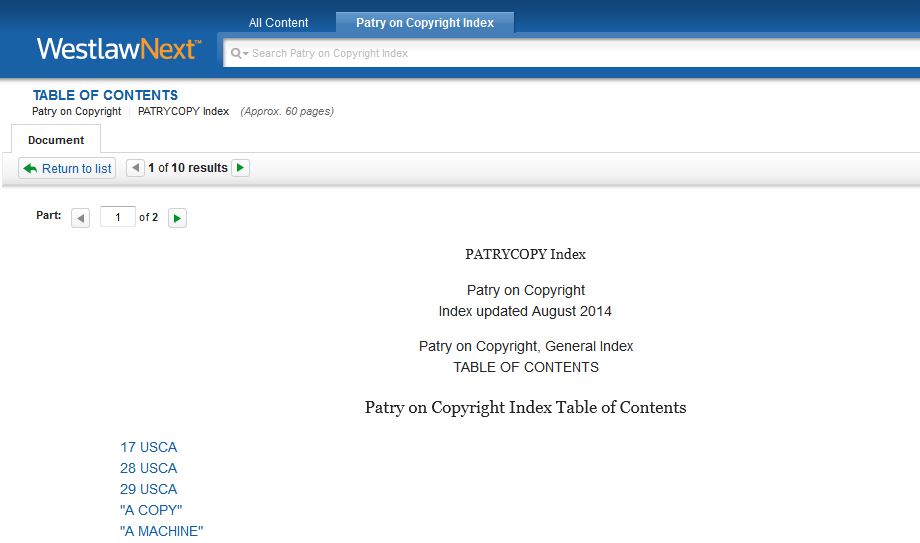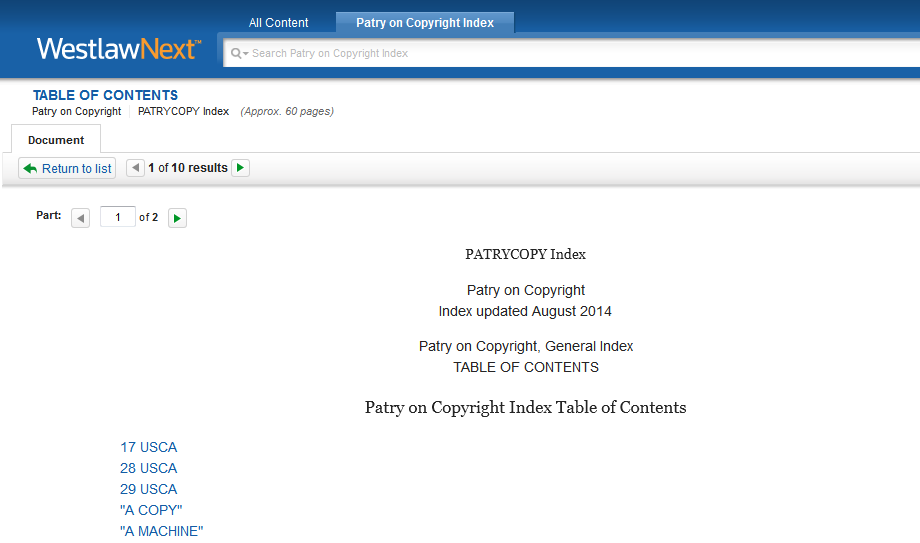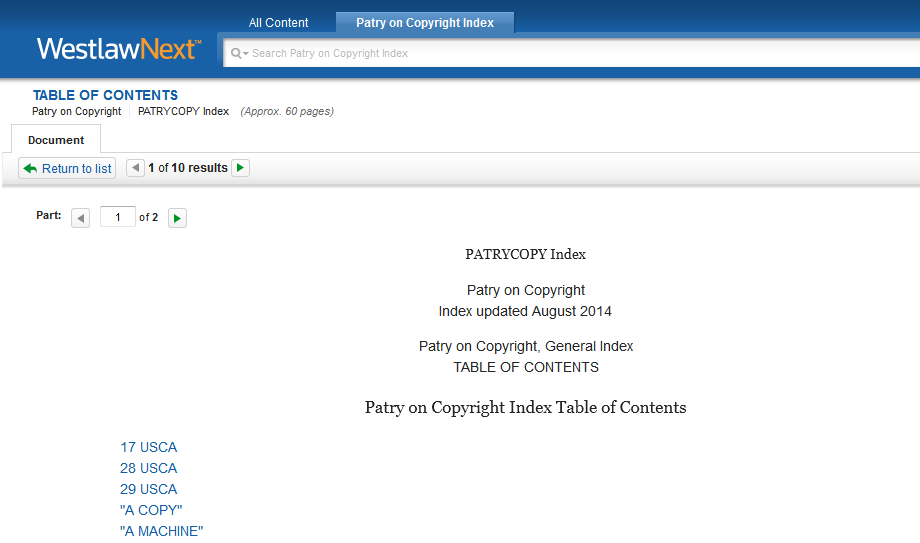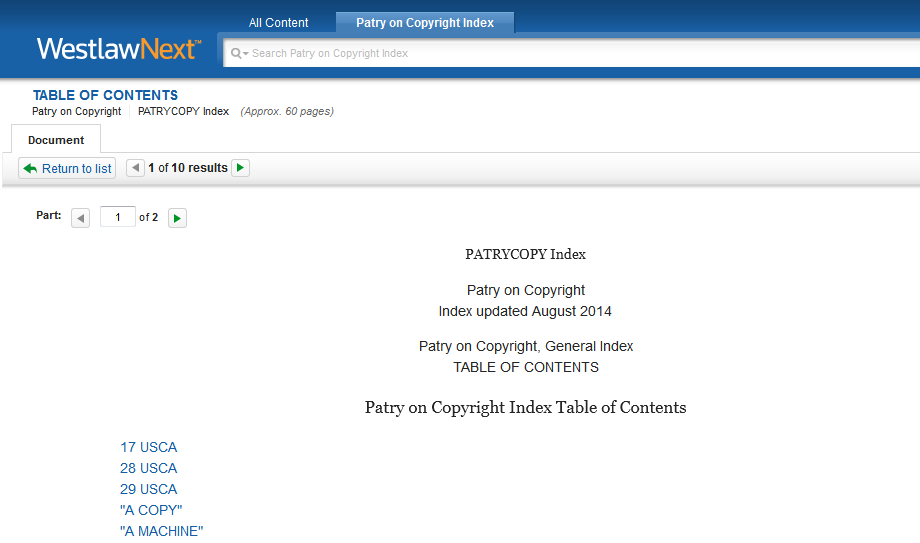Administrative Regulations
I’m not the smartest fellow in the world, but I can sure pick smart colleagues. – Franklin Delano Roosevelt
Let us never forget that government is ourselves and not an alien power over us. The ultimate rulers of our democracy are not a President and senators and congressmen and government officials, but the voters of this country. – Franklin Delano Roosevelt
4.1 Learning Objectives for Chapter 4
In working through this chapter, students should strive to be able to:
Describe the origins and authority of administrative regulations as a source of law.
Assess the primary publications of federal administrative legal materials: the Code of Federal Regulations and the Federal Register.
Appreciate the similarities and differences between federal administrative regulations and state administrative regulations.
Evaluate the various pieces of information provided in regulatory publications.
Evaluate the use of administrative notices, administrative decisions, and other administrative materials in interpreting administrative regulations.
4.2 Delegated Rule-Making Authority
As discussed in Chapter 1, each branch of government under a Separation of Powers system creates its own source of law. In Chapters 2 and 3, we covered the sources of law that most lay-people would recognize as law: constitutions, statutes, and judicial opinions. However, in the American legal system, the executive branch also contributes rules to the body of law.
Executive-made rules take the form of administrative regulations, which various executive departments, agencies, and commissions issue under an explicit delegation of rule-making authority from the legislature. Essentially, the legislature passes a statute with a broad aim, and then delegates a particular agency of expertise to provide more specific rules aimed at achieving the broad goal. Lawyers call a statute that creates an agency to regulate a particular area an “organic statute” or “organic act.”104 Similarly, an “enabling statute” delegates additional authority to an already existing agency.105 Both organic statutes and enabling statutes establish broad aims desired by the legislature and create mechanisms for agencies to provide the details. As such, regulations tend to be much more specific in nature than statutes.
Executive agencies possessing delegated legislative authority have existed in the Anglo-American legal tradition at least since the 1530s, which happens to be when people also first began recognizing the primacy of legislative rule-making authority to begin with.106 Since their introduction in Tudor times, however, executive branches tended to exercise delegated rule-making authority somewhat sparingly for the next four centuries or so.
Then, in response to the Great Depression in the U.S., the creation of executive agencies and the use of administrative regulations exploded with the New Deal of the 1930s. The Roosevelt administration pushed for the creation of a veritable “alphabet soup” of federal agencies, partially as an act of job creation, but partially as a way of modernizing the U.S. economy.107
However, increasing the amount of regulatory output under delegated authority raised concerns about democracy and due process. After all, many of the experts who draft rules for agencies are directly hired by the agency in question and were not elected by voters. In order to assuage these concerns, the federal government developed a unique system of publication of regulations that allows citizens to comment on proposed regulations before they go into effect. The publication system became formalized by statute in 1946.108
State executive branches likewise often issue copious amounts of regulations in the modern era. Furthermore, state publication of administrative regulations tends to follow the federal model, albeit on a more limited scale. As the federal system of regulation promulgation remains the most sophisticated, we will begin by taking a closer look at federal regulations.
4.3 Researching Federal Regulations
As discussed above, the federal government follows a regimented publication procedure for administrative regulations in order to comport with due process. In fact, the federal Government Publishing Office (GPO) issues three separate publications related to regulatory research: the Code of Federal Regulations (C.F.R.), the List of Sections Affected (L.S.A.), and the Federal Register (F.R.). Of the three publications, the C.F.R. allows legal researchers to look up regulations by topic most easily, while the F.R. contains the most background information beyond the regulations themselves. The L.S.A. is used primarily to update C.F.R. sections; think of it as a multi-volume pocket part. The federal government also creates electronic copies of the C.F.R. and F.R., but as the system developed in print, we will introduce it in print in order that students may easily see the interactions between the various pieces of the system.
4.3.1 The C.F.R.
As the use of the word “code” in its title implies, the C.F.R. contains all federal regulations currently in force, neatly arranged in topical order. What the U.S.C. is for federal statutes, the C.F.R. is for federal regulations. In fact, the two publications share the same basic structure: sections as building blocks, housed in chapters/sub-chapters, which in turn get grouped into titles. However, because of the dense nature of regulations, the C.F.R. makes use of an additional unit of organization in between the section and chapter levels. This unit is called a “part.” (Sometimes “subparts” will also be included.) Nonetheless, the citation of a federal regulation looks substantially similar to the citation of a federal statute: title number, C.F.R., section number. A researcher would pull a regulation by citation just as he would pull a statute by citation.
Legal researchers also go about finding regulations on a specific topic in the same ways they would go about finding statutes on a specific topic. Like the U.S.C., the C.F.R. features a series of increasingly-detailed tables of contents. Also like the U.S.C., the C.F.R. includes an index that researchers may use to look up specific terms, though researchers should remember that sometimes a specific term will be located as a subset under a more general index term. Thus, though the source of law differs, researchers should generally use the same methods of research covered in Chapter 2 for codes to discover a specific section within the C.F.R.
However, once a researcher has opened a C.F.R. section, he will note some key differences, as well as some similarities. Figure 4.3.1a provides an excerpt from the C.F.R. The first thing the reader probably notices about the regulation is the incredible level of detail provided, especially compared to typical statutory language. This language is typical in regulations. Second, note the lack of annotations. Because regulations change quickly and possess such a high level of detail, commercial publishers do not reprint them, and thus no one provides editorial content. Finally, note that, like the U.S.C., the C.F.R. provides researchers with citations to each section’s creating and amending documents. In the C.F.R., these cites refer the researcher to the Federal Register, which will be discussed in section 4.3.3 below.
Figure 4.3.1a: Excerpt from the Code of Federal Regulations
Upon locating a relevant regulation, a good researcher will then flip to the beginning of the part in which it appears. For instance, the regulation in Figure 4.3.1a, 9 C.F.R. § 77.7, may be found in Subpart B of Part 77 of Subchapter C of Chapter 1 of Title 9 of the Code of Federal Regulations.109 An excerpt from the beginning of said Part 77 appears in Figure 4.3.1b. A good researcher would then do two things. First, he would scan the part’s table of contents for other sections that may affect his client, including any definitions or general provisions section. Second, he would look for the statutory grant of authority for the regulations in question. Remember, regulations are issued upon delegated authority. The organic and enabling statutes that did the delegating provide additional necessary avenues of inquiry when researching situations governed by regulations.
Figure 4.3.1b: Front matter to Part 77 of C.F.R. Title 9, showing the statutory grant of authority and a portion of the table of contents, or outline, for Part 77.
Thus, the C.F.R. provides a mostly self-contained means to research federal regulations currently in force. Although the G.P.O. publishes each title of the C.F.R. annually, as a print source it captures only a specific moment in time. Because regulations tend to change rapidly, legal researchers should make sure to update any applicable regulations using the second of the federal regulatory publications: the L.S.A.
4.3.2 The L.S.A.
As mentioned above, the List of Sections Affected essentially functions as a giant pocket part to the C.F.R. In fact, the L.S.A. really does what its name suggests; it lists sections of the C.F.R. that have been affected by regulations issued after the last printing of the C.F.R. title in which the section appears.110 An excerpt from the L.S.A. appears in Figure 4.3.2.
Figure 4.3.2: Excerpt from the List of Sections Affected
Note that only C.F.R. sections that have indeed been affected by subsequent regulation appear in the L.S.A. Thus, if a C.F.R. section does not appear in the L.S.A., then it has not changed and a researcher is free to rely upon the version discovered in the C.F.R. itself.
Note also that if a C.F.R. section does appear in the L.S.A., meaning that the text of the regulation has changed since publication, the L.S.A. does not actually reproduce the updated text of the changed regulation.111 Rather, the L.S.A. refers the researcher to the number of the page upon which the researcher can find the updated text. These page numbers refer to pages of the third of the federal regulatory publications, the Federal Register.
4.3.3 The F.R.
The Federal Register contains much more information than the other federal regulatory publications. It also predates the C.F.R. by more than a decade and serves as the primary means by which regulations satisfy due process. The GPO publishes the F.R. daily.112 The F.R.’s pages number consecutively per year, meaning that the F.R. issue published on January 2 begins with page 1, while page numbers in December issues often approach 6 digits. The consecutive pagination is what allows the L.S.A. to cite the F.R. solely by page number. Other citations to the F.R. proceed as normal: volume number (each year’s run constitutes a separate volume), F.R., page number.
When a federal administrative agency wishes to change a regulation or issue a new regulation, it first issues the regulation as a Proposed Rule in the Federal Register. Proposed rules provide details on why the regulatory change is needed and give citizens the opportunity to comment upon the proposed rule. Thus the Federal Register’s primary purpose is satisfying due process. The F.R. features its own index which can be used to find rules by topic. Figure 4.3.3a provides an excerpt from a proposed rule. Please note, however, that most proposed rules comprise multiple pages.
Figure 4.3.3a: Excerpt from a Proposed Rule in the Federal Register
In addition to proposed rules, agencies also publish final rules in the Federal Register. For instance, after an agency assesses all the comments submitted on a proposed rule, it will make necessary changes and issue it as a final rule. Final rules are then incorporated into the C.F.R. at the appropriate section as regulations. Because the F.R. publishes the final rules, it works in conjunction with the L.S.A. to update C.F.R. sections. Figure 4.3.3b shows the final rule in the F.R. alluded to by the L.S.A. in Figure 4.3.2.
Figure 4.3.3b: A Final Rule in the Federal Register
Because of the publication of final rules, researchers may also use old editions of the Federal Register to find former versions of federal regulations, much as researchers may use session laws to find former versions of statutes.
In addition to proposed and final rules, the Federal Register also allows administrative departments and agencies to publish “notices” if they want the public to be aware of a particular issue. Often notices describe administrative hearings or orders, but agencies can use them to provide the public with materials that detail the application of administrative rules. Notices themselves do not carry the force of law but can often offer researchers helpful guidance as to how an agency applies its regulations. Figure 4.3.3c shows an example of a notice in the Federal Register.
Figure 4.3.3c: A Notice in the Federal Register.
Thus, the Federal Register allows compliance with due process, provides a means of updating C.F.R. sections, and publishes a wealth of information lawyers can use for regulatory interpretation. In fact, so useful is the Federal Register that the GPO now also produces an online version113 that can be used via the electronic research methods discussed in Chapter 5. Altogether, the federal government provides a robust publication system for conducting regulatory research.
4.3.4 Administrative Decisions & Guidance
The federal regulatory publishing system described above is comprehensive in that it contains regulations and some supporting materials from all federal agencies. However, the Federal Register does not contain all of the work produced by federal agencies, many of which publish their own titles containing supplemental information. Furthermore, commercial publishers will sometimes gather and publish administrative materials on certain topics. The publications available for administrative materials vary by agency and topic, but researchers can consult Table 1.2 of The Bluebook to determine which publications are available for any particular federal agency.114
Legal researchers tend to think of supplementary materials produced by administrative agencies in two broad categories: administrative decisions and administrative guidance. While neither of these types of publications create binding rules of law, researchers often use them to help interpret regulations that do possess the force of law. Let us first look at administrative decisions.
Administrative decisions resemble judicial opinions, except that they are issued by agencies’ own hearings or review boards that lack the force of precedent and therefore do not generate common law.115 This is because administrative adjudicative bodies derive their authority from Congressional delegation and thus are generally treated as “Article I Courts” after the article of the Constitution providing for Congressional power.116 Only “Article III Courts,” those courts whose authority derives directly from the Constitutional article granting power to the Judiciary, act as common law courts.117
Researchers may find administrative decisions in a variety of places. First, many individual agency publications contain decisions, and these publications can generally be found in print at libraries participating in the Federal Depository Library Program. For example, decisions of the Interior Board of Indian Appeals appear in Interior Decisisons, the reporter of administrative decisions compiled by the Department of the Interior and sent to Federal Depository Libraries by the GPO.
However, visiting a Federal Depository Library and/or enlisting the aid of a government documents librarian can be time consuming. For this reason, the full-service legal search platforms all include at least some administrative decisions, which can be found using the methods described in Chapter 5. The websites of agencies themselves also often link to their administrative decisions. Researchers should consult the United States Government Manual118 for an official listing of all federal agencies, and USA.gov provides links to the agency websites. Regardless of how a researcher finds administrative decisions, he may use them to help interpret regulations but should not rely on them as common-law precedent.
In addition to issuing decisions actively applying their regulations to controversies, most agencies also produce manuals and other internal documents that researchers can use to determine how an agency is likely to interpret its own regulations. These materials are referred to as “administrative guidance.” For example, the Internal Revenue Service (I.R.S.) publishes the Internal Revenue Manual,119 which describes how the I.R.S. conducts its business. While administrative guidance materials vary from agency to agency, researchers should be able to find them in similar ways to administrative decisions: in Federal Depository Libraries, in commercial databases, or on agency websites. Regardless of the form the materials take, researchers can use them to help interpret and apply federal administrative regulations as a source of law.
4.4 State Regulations
State executive agencies also issue binding administrative regulations, though not to the same extent as federal agencies. At first this may strike the reader as counterintuitive. If federal competency is limited to enumerated powers only, would one not expect to find less, rather than more federal regulations? The answer to this quandary lies in two facts. First, administrative regulations often target complicated commercial and industrial activities, and so regulating interstate state commerce requires numerous and detailed regulations in a variety of areas. Second, state budgets tend to pale in comparison to the federal budget. Thus, federal agencies tend to be more numerous and better staffed than state agencies. Nonetheless, state executive branches do regulate certain activities within their states.
In format, administrative regulations will vary state by state to a certain degree, but they often mimic the form of federal regulations. For example, Figure 4.4 shows an administrative regulation from Kentucky. Note the explicit reference to the statutory grant of authority, just like federal regulations contain. Also, if a researcher flipped to the beginning of either the chapter or title that house the particular regulation (Chapter 10, and Title 902 respectively), he would find a table of contents for that particular unit of organization. Also, most state administrative codes include a topical index at the end. Thus, legal researchers interact with state administrative codes in the same ways they would with the C.F.R.
Furthermore, citation of state administrative regulations tends to resemble that of federal regulations, though of course this varies depending upon the state.120 Typically, though, lawyers cite state administrative codes in the standard title number-code abbreviation-section number format.
Figure 4.4: 902 KAR 10:130
Most states also publish administrative registers, in the style of the Federal Register. However, most state administrative registers amount to very poor imitations of the F.R. (mostly because the states themselves are much poorer entities than the federal government). For instance, Kentucky’s administrative register is published monthly (as opposed to daily) and contains far less information. It still provides citizens with notice of proposed rule changes, and researchers still can use it to update administrative code sections, though state administrative codes usually are not big enough to require a separate list of sections affected. (Affected sections instead typically appear in list form in part of the administrative register.)
Also like federal agencies, state agencies both hold hearings that lead to administrative decisions and create internal documentation that researchers can use for administrative guidance. As with the other administrative materials, the availability of administrative decisions and guidance varies state by state and tends to be less prevalent at the state level than the federal level. Students interested in conducting state administrative research should contact a law librarian in their state to learn what sources are available.
Thus, legal researchers typically interact with state administrative materials in the same ways with which they interact with federal regulatory publications. Indeed, the major differences between federal and state regulatory publications are differences of scale. It is important that aspiring lawyers learn to interact with regulations at both the state and federal levels, as regulations act as the source of law for the executive branch and often govern commercial activities in their jurisdiction.
We have now introduced students to all the building blocks of modern legal research. Let us now turn our attention to the predominant means of finding those blocks: electronic research.
4.5 Concluding Exercises for Chapter 4
Try your hand at conducting regulatory research!
4.5.1 Introductory Exercise on Researching Regulations
Hello all,
We have been engaged to advise Giovanni “Jonny” Camminatore on a business venture he plans to undertake as a retirement career.
Mr. Camminatore, an amateur distiller, wants to bring his most recent attempt at whiskey to market as “Erba Azzurie Bourbon.” I will need you to do the following:
Find the regulations in the C.F.R. that deal with labeling and advertising of liquors. Is there a regulation that defines “standards of identity” for different types of spirits?
According to the regulation you found, what steps must Mr. Camminatore take in his whiskey-production process in order to label it as “bourbon”?
Thanks,
Mr. Partner
4.5.2 Intermediate Exercise on Researching Administrative Guidance
Dear Team:
We have been engaged by Sinclair Upton, a research scientist and product developer for Bow Chow Industries, Inc., a pet food manufacturer. Dr. Upton is concerned about some of the additives that Bow Chow puts into one of its lines of canned dog food. He is considering whistle-blowing on the company to the F.D.A. as a confidential informant. Before he does, however, he would like assurances that the F.D.A. will preserve his anonymity. I need you to find some F.D.A. guidance documents (preferably the F.D.A. manual) that outline their procedures for protecting the anonymity of confidential informants in the context of the F.D.A.’s inspection procedures related to animal food additives. Let me know what you find.
Regards,
Mr. Partner
4.5.3 Advanced Exercise on Researching Regulations
Hello all,
Last week when I was having my annual check-up, my allergist, Dr. Billie Mayes, mentioned that she’s been working on a new generic inhaler (tentatively to be marketed as “The Wheeze-Whacker”) which I currently take the designer version of. Unfortunately, she told me that she could not get it to work without using an ozone-damaging aerosol, and that she is afraid the FDA, under the influence of the EPA, will not allow the inhaler to go to market. The generic would potentially save individual asthma sufferers between six hundred and twelve hundred dollars a year, so I told her I’d have my people look into it.
Dr. Mayes describes the Wheeze-Whacker as a “super short-acting, rescue bronchodilator extraordinaire.” Each unit consists of 200 metered doses with an extra 4 “priming doses.” The active moieties in the inhaler are flunisolide and albuterol.
I would like you to answer the following:
Find a federal regulation on using aerosols that damage the ozone in drugs, specifically asthma inhalers.
Assuming such a regulation exists, does it prohibit the use of said aerosols, and if so, does it include any exceptions? (Asthma drugs are life-savers; surely there are exceptions for things of that nature!)
Would the Wheeze-Whacker, in its specific make-up, qualify under a necessity-type (or however they phrase it) exception? What authority supports your answer?
What statute(s) grant(s) authority to the FDA to regulate the use of ozone-damaging aerosols in drugs such as inhalers?
Thanks,
Mr. Partner
4.6 Recommended CALI Lessons for Further Practice
CALI hosts an impressive number of interactive lessons on its website. The following lessons on researching administrative law touch upon material covered in this chapter. They would be a great place to start for students looking for further practice on the concepts introduced in this chapter!
4.6.1 “Introduction and Sources of Authority for Administrative Law” by Deborah K. Paulus-Jagric and Clare Willis
Summary: an introduction to agencies’ powers within the constitutional scheme and the regulatory process.
Lesson ID: LWR 33
URL: http://www.cali.org/lesson/765
4.6.2 “Rulemaking: Federal Register and CFR” by Katie Brown and Deborah K. Paulus-Jagric
Summary: an overview of the rulemaking process and the publication of the same.
Lesson ID: LWR19
URL: http://www.cali.org/lesson/580
4.6.3 “Researching Federal Administrative Regulations” by Sheri H. Lewis
Summary: an overview of researching federal regulations using print sources.
Lesson ID: LWR 06
URL: http://www.cali.org/lesson/566
4.6.4 “ Agency Decisions and Orders” by Marcia Baker and L. Elliott Hibbler
Summary: an introduction to the process of researching federal agency decisions. You should expect to encounter: overview of agency regulatory powers; types of agency decisions; how to find them; how to update them; and their precedential value.
Lesson ID: LR57
URL: http://www.cali.org/lesson/1223
4.6.5 “Government Documents” by Alicia Brillon
Summary: to familiarize the user with the range of documents produced by the Federal government, where they can be found, and how they can be used in a law practice. The lesson focuses on issues surrounding government documents including: authenticity, how to find and use government documents, and statistics.
Lesson ID: LR96
URL: http://www.cali.org/lesson/8457
4.6.6 “Attorney General Materials” by Marcia Baker and Maureen H. Anderson
Summary: an introduction to federal and state attorney general materials.
Lesson ID: LR44
URL: http://www.cali.org/lesson/862

